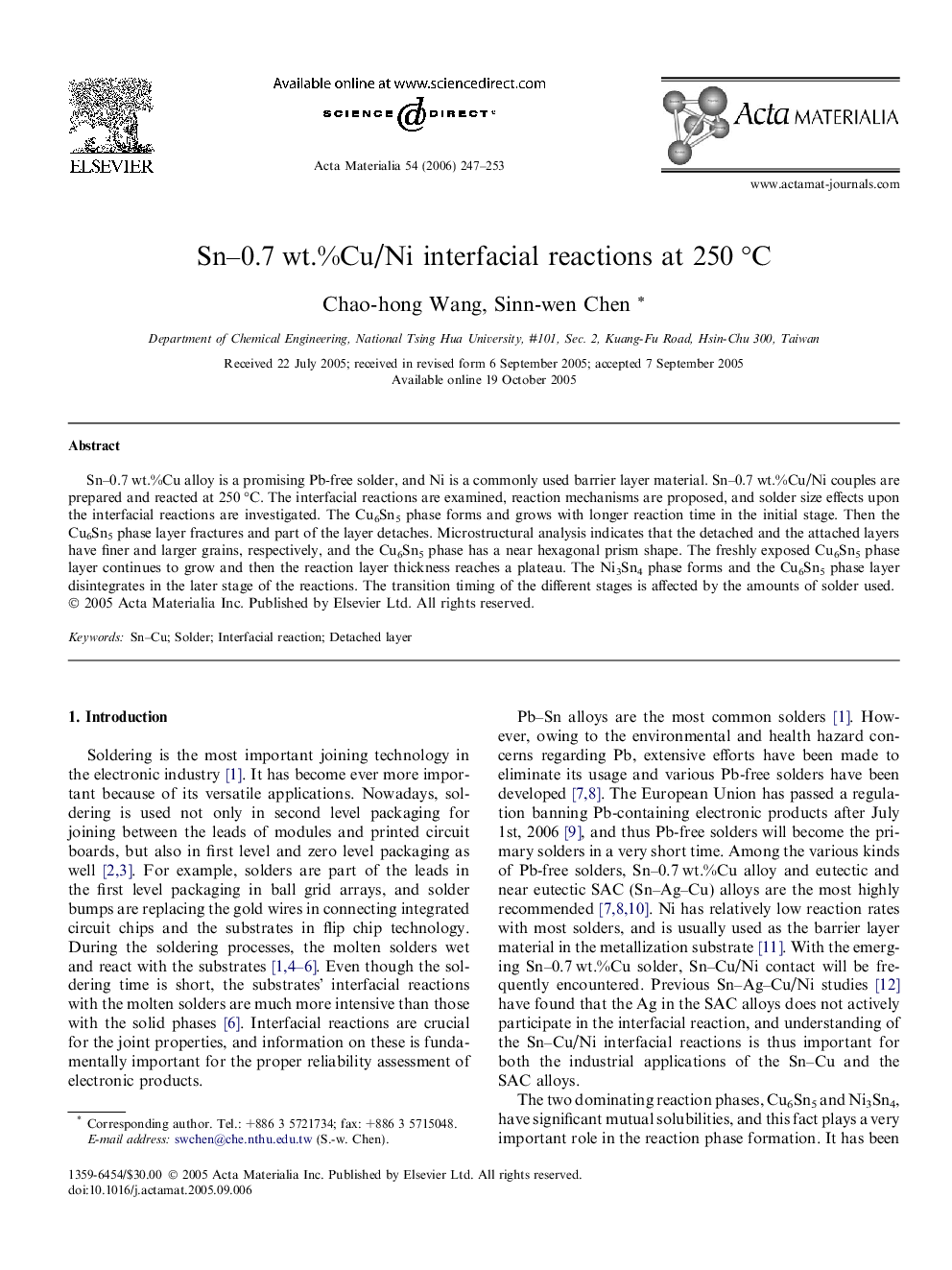| Article ID | Journal | Published Year | Pages | File Type |
|---|---|---|---|---|
| 1450823 | Acta Materialia | 2006 | 7 Pages |
Sn–0.7 wt.%Cu alloy is a promising Pb-free solder, and Ni is a commonly used barrier layer material. Sn–0.7 wt.%Cu/Ni couples are prepared and reacted at 250 °C. The interfacial reactions are examined, reaction mechanisms are proposed, and solder size effects upon the interfacial reactions are investigated. The Cu6Sn5 phase forms and grows with longer reaction time in the initial stage. Then the Cu6Sn5 phase layer fractures and part of the layer detaches. Microstructural analysis indicates that the detached and the attached layers have finer and larger grains, respectively, and the Cu6Sn5 phase has a near hexagonal prism shape. The freshly exposed Cu6Sn5 phase layer continues to grow and then the reaction layer thickness reaches a plateau. The Ni3Sn4 phase forms and the Cu6Sn5 phase layer disintegrates in the later stage of the reactions. The transition timing of the different stages is affected by the amounts of solder used.
